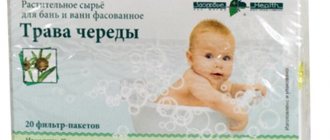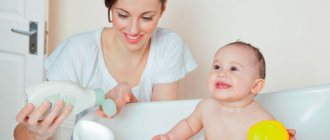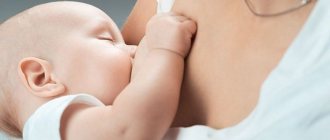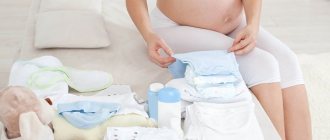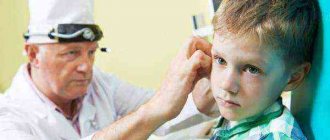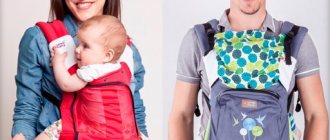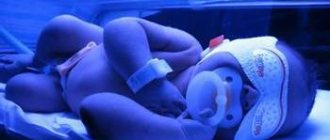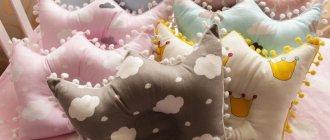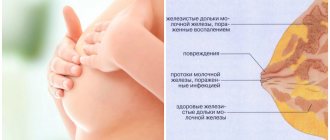Why is it important to bathe a newborn?
The child usually receives his first bath in the maternity hospital. There, during the examination, the neonatologist washes off the primary lubricant from him. There are people who consider it useful and do not bathe the baby for the first days. In Russian maternity hospitals, this plaque is considered a breeding ground for pathogenic bacteria, so children must be washed.
After the mother and baby return home, the responsibility to bathe the little person lies with the parents. They begin to do this 5-6 days after discharge from the hospital.
Interesting. The baby does not sweat until 3 months of age. The glands that produce sweat begin to work only by this time. Their work will be fully improved only by the third anniversary.
Essentially, a newborn baby does not get dirty. To maintain cleanliness, wiping your face and washing your face is enough. Still, the child needs to be bathed. They do this because:
- To sleep well, your baby needs to be tired. He still moves little, and bathing is a feasible physical activity.
- The child needs to develop. Bathing strengthens the muscles of a small body.
- Children usually calm down in water. The sensations they experience are similar to those they had before birth, in the mother's womb. Bathing helps to calm down a child who has been out for too long and eases his condition with colic.
Calm newborn in water
- When swimming, beneficial substances are added to the water. For example, bath salts or decoctions of medicinal herbs. Now they sell special concentrates, the solution in one bottle is enough for 2-3 baths.
Preparing the bathtub for bathing
How to bathe a newborn at home alone
The process of bathing an older child is quite simple. You can wash it in the shower, or you can fill the bath with water and give your child suitable toys. For a baby under one year old and a newborn, preparation takes longer. After all, the baby, depending on its age, either cannot hold its head up, or does not sit, or sits, but unsurely. Special devices can make bathing easier:
- Small bath. Surely, this household item is familiar to today’s parents from their own childhood. Today it also does not lose its relevance. You can buy a regular plastic bathtub. They sell stands for these so that mom doesn’t have to bend over. More expensive baths are made with a drain, a built-in thermometer, and made of special soft plastic. There are also folding ones that do not take up much space. Usually this item is relevant until two or three months, then the baby is transferred to the “adult” bathroom.
- Sun lounger slide. This is a device that supports the child in a semi-lying state. It is attached to the bottom of the bathtub (it doesn’t matter whether it’s metal or plastic) and has special recesses that prevent the baby from slipping. Previously, while there were no such slides, the parents’ hands had to support the baby. Today, sun loungers are used for a maximum of 6-7 months, until the child sits down.
- Hammock. Essentially, this is an improved slide. This is a special piece of fabric that is stretched in a special way over the walls of a small bath. There is a child in it. His body is washed by liquid, and his head is above the water level. This is a recent invention, it is still more difficult to find than a slide. The important thing is that the hammock can only be attached to a small bathroom, so it can only be used before being transferred to a larger one. That is, bathing a 2-month-old baby with him is still possible, but at six months it is no longer possible.
- Inflatable ring. An innovation in recent years, it is made to be worn around a child's neck. The baby's body moves freely in the water, and his head stays above the water.
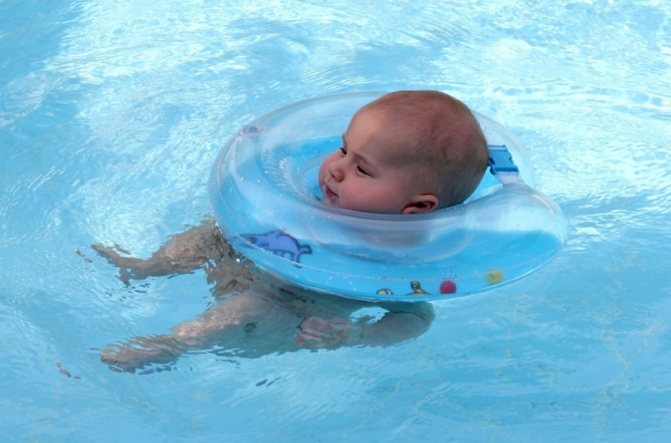
Baby in a swimming circle
Note! There is no consensus on the benefits and harms of this device. Some people think that the circle is useful because it provides adequate stress on the body. Others believe that it is harmful to the neck. In any case, it can be used when the baby’s neck is already a little stronger. That is, not earlier than a month of life.
It is important to note that circles are different. Those worn around the neck should only be used in a large bathtub with sufficient water and always under the supervision of an adult. Others that are worn with a special vest on the waist (known as SwimTrainer) are only for deep water.
- Seat. This is a chair that is attached to the bottom of the bathroom using suction cups. It is allowed for those babies who have already sat down (that is, approximately in the sixth month of life), but are holding it uncertainly.
- Towel with corner. It is put on the head, and the body is wrapped in linen. This is more convenient than throwing on a square or rectangular towel.
When bathing, you will also need bath salts or special herbal infusions, and a thermometer to measure the water temperature. It would also be a good idea to prepare a ladle for pouring and a few toys.
It is recommended to wash the bathtub itself with soap before bathing the baby, at least once every couple of days, especially if there are animals in the house that are cleaned there.
Bathing rules
In order for water procedures to bring only benefits to the child, they should be carried out taking into account a number of rules. Bathing is a ritual that requires certain items.
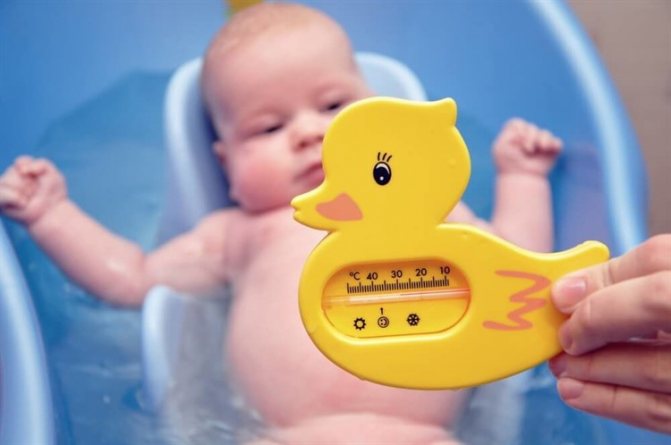
Thermometer for measuring water temperature
To take a bath you will need:
- thermometer for determining water temperature;
- baby bath. Pediatrician Komarovsky claims that at two months it is already possible to carry out hygiene in a common bath. It should first be washed with soda;
- towel;
- clean clothes;
- bed sheet;
- hygiene products.
Bathing a baby at 2 months should be carried out in accordance with the following rules:

- it is necessary to maintain the temperature in the bathroom at +22-23 degrees;
- the water should be warm and comfortable for the baby (approximately +36-37 degrees). Its temperature must be constantly monitored and maintained at an optimal level;
- before swimming, you should close all the windows in the apartment to prevent drafts;
- The child should be placed in the water gradually: first the legs, then the buttocks, then the back, arms and head;
- if the baby’s umbilical wound has not yet healed, then he should be bathed in a baby bath in boiled water;
- To improve the condition of the skin, you can take herbal baths. To prepare decoctions, pediatricians advise using oak bark, chamomile, string, sage, lavender, motherwort, valerian;
- if the child has a fever, bathing should be postponed;
- You should not use herbal decoctions and soap every day;
- if the baby is in a bad mood and does not want to take a bath, then the procedure should be postponed to another day.
In the summer, when the baby is constantly sweating, it is worth bathing him every day. In winter, the frequency of water procedures can be reduced. During illness and the post-vaccination period, it is better to avoid bathing.
How often do you bathe a newborn?
How often to bathe a newborn baby up to a month old
There is ongoing debate about when to start bathing a baby. Some people believe that this cannot be done until the belly button heals. They believe that an infection can enter the child’s body through the umbilical wound. Modern pediatricians call this opinion superstition. You can bathe a baby with an unhealed navel.
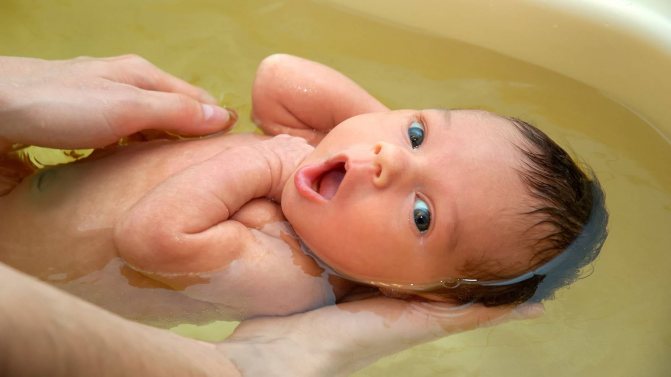
Bathing with an unhealed umbilical wound
Despite the fact that children do not get dirty until a certain age, they need to be bathed often from birth. Among other things, this also teaches them to keep their body clean. On average, infants are bathed with the following frequency:
- From birth to six months - every day;
- Six months to a year - once every two days;
- Over a year old – 2-3 times a week.
Each age has its own recommendations for how long to swim:
- 10 minutes is enough for a newborn;
- A two-month old can be bathed for 15 minutes;
- A 6-month-old baby can be kept in water for half an hour.
The baby’s mood and external conditions are also important here. If the baby does not like to bathe, cries, is restless, then there is no need to insist and force him. The time and frequency of procedures can be reduced. On the contrary, if a little person loves water, then it’s worth letting him swim longer.
If it's cold at home or the child is sick, this is a reason to postpone bathing. It is usually recommended to abstain from it after vaccinations and blood sampling. On the contrary, if it is hot, you can refresh the baby more often, even several times a day.
It is imperative to choose the right time for bath procedures. Bathing a 2-month-old baby can be shifted from evening to morning if it has an exciting effect on the baby. More often than not, children calm down from being in the water.
The use of herbal infusions
Taking herbal baths is indicated for skin diseases, weakened immunity, gastrointestinal disorders, tearfulness, and increased irritability. You need to select herbs depending on your goals; as a rule, for the little ones it is acceptable to use string and chamomile.
To brew the herb, you need to boil 1 liter of water in an enamel pan and cool slightly.
Place 4 tbsp in a bowl. l. raw materials or 4 filter bags, and after 15-30 minutes, strain and pour into the bath. The concentration should be such that the water is slightly colored. Recommendations for using herbal infusions:
- Before immersing the child in the bath, you need to check his reaction to the grass - apply a small amount of the product to the skin. Allergy symptoms usually appear within 15 minutes;
- take herbal baths no more than 2 times a week, as they dry the skin;
- increase bathing time gradually: from 5 to 15 minutes;
- use plants recommended by your pediatrician. Avoid the use of celandine, tansy, broom, and wormwood;
- Avoid using soap and other children's cosmetics at the same time;
- prepare decoctions immediately before use.
What temperature of water and air is needed
How to bathe a newborn baby for the first time at home
Recently, mothers have been striving to strengthen their children. In fact, bathing is part of hardening. Some parents go further and start collecting cool water for water procedures. This is the wrong approach.
The water temperature for bathing a newborn should initially be 37 degrees Celsius. The air in the bathroom should be between 20-22 degrees Celsius. There must be no drafts.
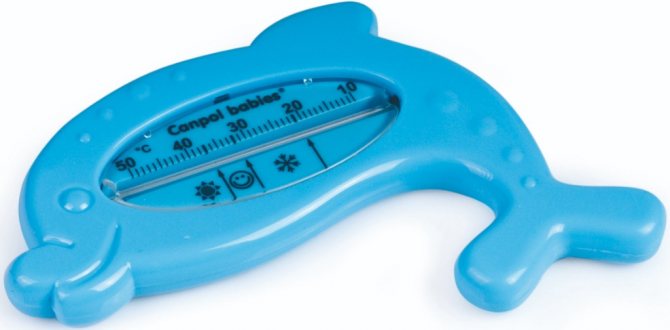
Example of a water thermometer
You should not boil water, as was customary in the last century. For bathing even a newborn baby, regular running warm water is suitable. Boiling still does not sterilize the water, but the nerves of adults who have to do this every day suffer. Considering that the calmer the mother, the calmer the child, it’s worth taking care of her nerves.
Up to six months
For a newborn, water at 37 degrees is recommended for a reason. The fact is that this is exactly the temperature of the amniotic fluid in which the baby lived for 9 months. If you want to harden a little person, then you should cool the liquid by 0.5 degrees every 3-4 days. The lowest allowed temperature at this age is 30 degrees Celsius. The room should not be stuffy or cold - 20 degrees is enough.
From 6 months to a year
Moms are interested in how to bathe a baby at 6 months if they want to toughen him up. For this:
- Reduce the air temperature to 18 degrees (gradually);
- Reduce the water temperature to 28 degrees (0.5 degrees per week);
- Allow the water to dry, do not wipe it off the body (blot the hair, protect the baby from drafts).
All this is allowed to be done only if the baby calmly tolerates hardening and is not capricious. If he is sick, he should avoid swimming altogether. There will be nothing wrong if he lives for some time without taking a bath.
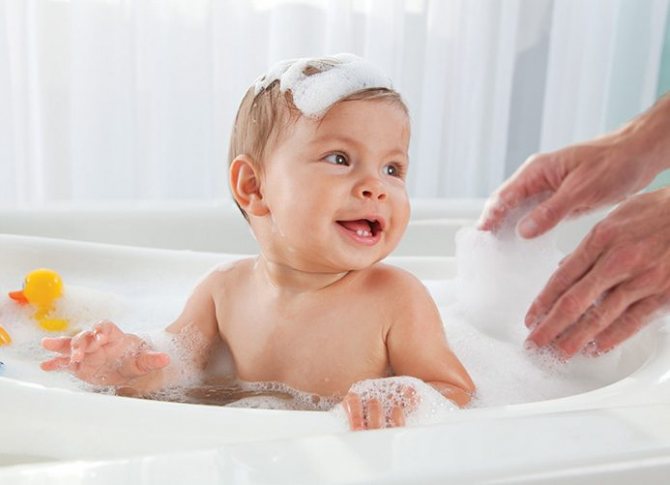
Joyful baby bathing
Baby bathing procedure
The general principle of bathing a baby up to one year is simple:
- Prepare a place for water procedures and subsequent care;
- Undress and bathe the child;
- Take it out, blot it with a towel, and carry out the final procedures.
Each age has its own characteristics:
- A newborn or two-month-old toddler may be afraid of water. Its direct contact with the skin can be scary. To make it easier for the baby to endure bathing, he is bathed lightly wrapped in a thin diaper. Particular care must be taken to ensure that there are no drafts - at this age it is very easy for a baby to catch a cold.
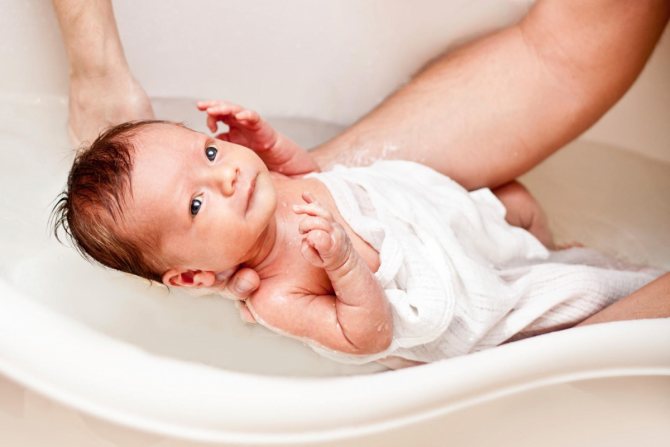
Newborn bathes in a diaper
- In the third or fourth month, the child becomes more active and requires close parental supervision. The baby will suddenly push off with his feet from the bottom of the bathtub and slide down the slide, swallowing water. All this can happen in a split second. Therefore, the mother must constantly keep her child in sight. Using toys already makes sense. A little person can catch them with his hands and keep an eye on them. It is also useful to carry him through the water in your arms, helping him to “swim”. Such swimming sessions strengthen the muscles of the body.
- Mothers should know how to properly bathe a 6 month old baby in a large bathtub. It is important to properly organize the space for water procedures. The baby is already actively exploring the world, which means he will try to grab everything that interests him. Therefore, you should be sure to remove small items, chemicals and cosmetics higher up. At 6 months it is already too late to use a circle on the neck - children's legs are already strong enough to push off from the bottom of the bath. The body is still weak and cannot support itself. As a result, the baby may turn head down. This is dangerous, so the circles should be removed from use as soon as the parent notices the baby's pushing movements. If your child is already sitting, it’s time to give him a special seat and toys. For example, playing hide and seek with a toy or teaching a baby to scoop up liquid with a ladle and pour it out.
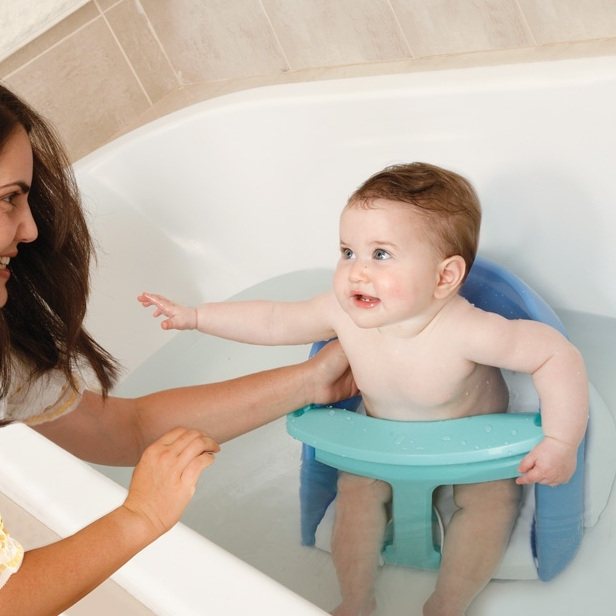
Six-month-old in a bathing seat
- When a toddler learns to walk, as a rule, he no longer wants to sit in a seat. Then you can try a fundamentally different way of bathing. For example, cover the bottom with a rubber mat with Velcro and take in some water. Allow the child to stand up to his full height, let him move around the bathroom independently, insuring him from an unfortunate fall. Mom and dad need to be careful - at this age (from 9 months to one year) children have already developed fine motor skills enough to turn on the water tap. It is imperative to ensure that the little person does not get burned or freeze.
Shampoo or bathing product for babies under one year of age should not be used every day. It is enough to wash your head once a week. Use body gel or foam no more than once every 4-5 days. It would be enough. In any case, cosmetics should be for children.
List of things for bathing a newborn
18.01.2011 On the day of arrival from the maternity hospital, if there are no corresponding contraindications, doctors recommend giving the baby a bath. What items do you need to have ready to successfully produce your first children's toilet?
For bathing and subsequent treatment of the baby’s body you will need
:
▪ an enamel or plastic bath (under no circumstances use it for other purposes!);
▪ in the first days of the baby’s life, bathing water must be boiled or disinfected with a weak solution of pale pink potassium permanganate. As the umbilical wound heals, a solution of chamomile, sage, and calendula can be used for the same purposes;
▪ room thermometer (the optimal air temperature for bathing a child is 23°-27°C);
▪ thermometer for measuring water temperature (the temperature of water prepared for swimming should not exceed 37°-37.5°C);
▪ a special stand for the bath or a mattress placed on the bottom;
▪ terry mitten or soft sponge (optional);
▪ special children's gel-foam for bathing or baby soap;
▪ plastic jug (water for dousing must be prepared in advance, before bathing);
▪ soft terry towel with a “corner”;
▪ a set of clean, dry and warm (in winter) underwear: a cap or scarf made of cotton fabric, a thin vest, a flannel vest, rompers, socks, “scratchies.”
▪ a box with sterile cotton wool;
▪ cotton swabs for cleaning ears;
▪ baby talc or a special product for treating the skin of infants based on zinc;
▪ baby cream or hygienic oil (you can use sterilized vegetable oil or vaseline oil);
▪ small scissors with rounded ends for cutting nails;
▪ hair brush (soft bristles).
If the process is properly organized, the baby will very soon love splashing around in warm water. Enjoy your bath!
| Also on topic |
| 01/06/2011 Bathing “according to the rules” Often, young mothers, while still in the maternity hospital, ask the question: how to bathe a child correctly? What is the optimal water and air temperature? What products are best to add to water? How often should water procedures be carried out? You will find answers to these and other questions in our article. |
| 12/15/2010 Subtleties of caring for a baby Every morning, a baby, just like an adult, needs hygiene procedures: he should wash his face, wash his hands, wash his genitals. It happens that just washing is not enough - you need to clean your nose or ears, and do some wellness procedures. Read our article about how this is done, as well as about other features of caring for a child under one year old. |
| 02/01/2011 Delicate topic: potty training a child Sooner or later, the issue of potty training a child becomes relevant for parents. Even if you firmly decide not to “bother with this topic,” questions from your grandparents will definitely take you by surprise. This usually happens when the baby reaches 6 months of age, and closer to a year, exclamations: “Is he/she still wearing pants?!” sounds like a sentence. Parents feel unsuccessful, and the baby is perceived as developmentally delayed. To dispel all concerns and nip grandmothers’ sighs in the bud, here are the recommendations of modern psychologists. |
| Our forum for parents |
| The best way to discuss any issue related to family, health, expecting a child or raising a child, or simply chat with other parents is on our forum for moms and dads! Welcome! |
What to do after swimming
Completing bath procedures is an integral part of them. It includes drying the baby and caring for him. When wrapping the baby in a towel, the parent must remember: under no circumstances should they rub it. Otherwise, the delicate baby skin will be damaged. You are only allowed to gently blot it. The hairs are not wiped off - just a corner of a towel is placed over them (or the edge of a straight one is thrown over them) so that it absorbs excess moisture.
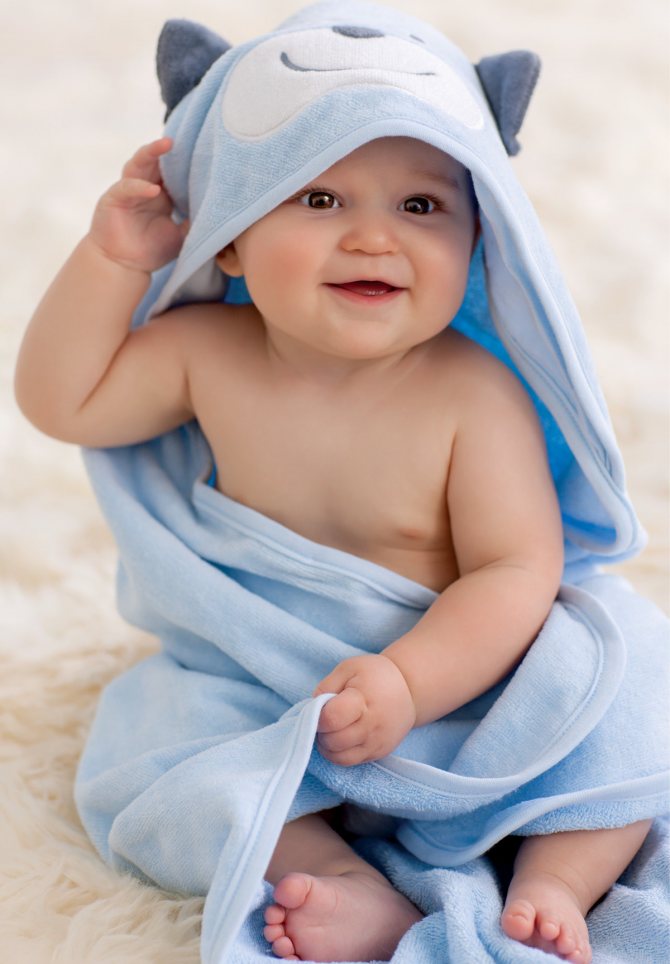
Baby in a towel with a corner
It is more convenient to carry out the remaining procedures on a flat surface - a changing table or board. This:
- Cleaning the ears from residual fluid and earwax. You can’t climb too far with a stick or a stick. Only clean out what goes into the outer sink.
- Treatment of the umbilical wound, if it still exists. Previously, brilliant green was used for this; now doctors recommend an alcoholic infusion of chlorophyllipt. It doesn’t turn the skin a poisonous green color, but it dries just as well.
- Trimming nails. For these purposes, it is better to use children's scissors. They are distinguished by rounded tips - even if the parent’s hand trembles, the child will not be harmed.
- Combing out crusts if present. Babies sometimes develop a “milky” crust on their scalp. It is removed as follows: apply oil before bathing, wash your hair with shampoo during bathing, and then comb it out with a baby brush. There is no need to use an adult comb - it is rough and will injure the baby. Special brushes are very soft, just designed for baby fluff.
- Skin lubrication. There is no clear recommendation on what exactly they do this with. Some people use oil, others use cream. Special cosmetics are recommended for atopic children. It is better to smear inflammation with Bepanten or zinc ointment. Toddlers really need additional protection and hydration. This stage can be combined with a relaxing massage.
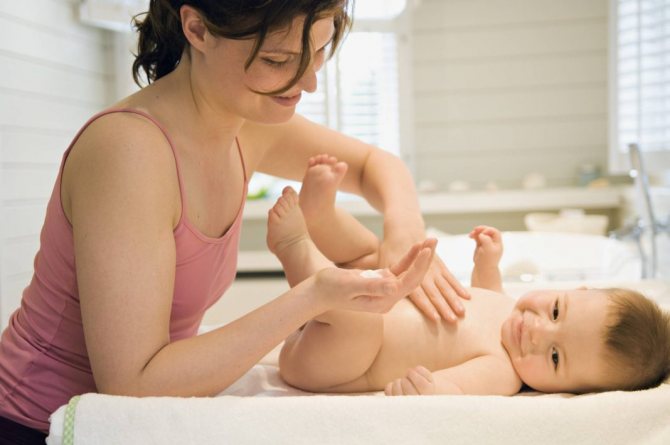
Mom smears cream on baby
There is nothing complicated about bathing a baby at home, as inexperienced mothers fear. With the right approach, daily water treatments can be turned into a pleasant pastime and even use bathing as part of your daily bedtime ritual.
